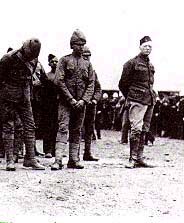
 Home
Page Back Ground History
Mining Regions
The Postcards
The Tokens
Links
Bibliography
Acknowledgements
Site
Forum Cards & Tokens Classified Ads.
Guest Book
Updates & News Contact
The Site
Home
Page Back Ground History
Mining Regions
The Postcards
The Tokens
Links
Bibliography
Acknowledgements
Site
Forum Cards & Tokens Classified Ads.
Guest Book
Updates & News Contact
The Site
 Home
Page Back Ground History
Mining Regions
The Postcards
The Tokens
Links
Bibliography
Acknowledgements
Site
Forum Cards & Tokens Classified Ads.
Guest Book
Updates & News Contact
The Site
Home
Page Back Ground History
Mining Regions
The Postcards
The Tokens
Links
Bibliography
Acknowledgements
Site
Forum Cards & Tokens Classified Ads.
Guest Book
Updates & News Contact
The Site


Witbank
Location: Eastern Transvaal (View location on map)
Minerals Worked: Coal
Principal Mines: Various Collieries around the town of Witbank.
Background History:
The originally occupants of the Witbank region were mainly farmers. As early as 1872 travellers in the area mentioned that coal was used by local residents as fuel. Evidence has also been found that at first the native Africans and later the Voortrekkers, mined coal from local river outcrops and transported it by ox-wagon to the Witwatersrand. But before the commercial mining of coal, Witbank was nothing more than a stock farming region which began to develop agricultural produce in order to supply the passing travellers on their way to the main Eastern Transvaal towns of Pilgrims Rest and Barberton where gold had been discovered in 1874.
Systematic mining at Witbank commenced in 1896 when Samuel Stanford, together with the Neumann Group, established the company "Witbank Colliery Limited", and sank the first shaft on the farm Witbank. Earlier the farm was generally known as Swartbosch although the official name was Leraatsfontein. It was given the name Witbank because it was not so cumbersome and because of the large quartz rock which, "loomed like a wagon tent in the distance". Because of the poor agricultural conditions, the owner of the farm, Jacob Taljaard, made a precarious living and as a result, his neighbours named the farm "Hongerplaas". By 1889, at least four collieries were operating in the Middelburg-Witbank district all of which were supplying the Transvaal's gold mining industry.
The town of Witbank was laid out in 1903 by Witbank Colliery Limited and in the same year Samuel Stanford erected the first wood and iron building, consisting of a shop and hotel. Witbank Colliery Limited controlled the town until 9th April 1906 when a local health committee was appointed. On 13th May 1910 a village council was elected and on the 8th November 1914 the town was granted municipal status. The mining of coal did not initially result in a population increase. It was only with the advent of the railway line between Pretoria and Lourenco Marques (now Maputo) that Witbank's mining industry was placed on a firm economic basis and thereafter its population increased considerably.
One of the most interesting stories emanating from Witbank's early history is that associated with how one of it colliery managers helped in the escape to freedom of a young British POW on the run from his Boer captures. This POW was to go on to become one of the most influential men of the twentieth century.
In 1899 a 25 year old British war correspondent by the name of Winston Churchill arrived in Estcourt in Natal. He had come to South Africa to report on the Anglo Boer War for the London Morning Post. The British army was waiting to march on Ladysmith and relieve its trapped garrison and towns folk. Churchill later described Ladysmith as "the poor little persecuted town – famous to the uttermost ends of the earth".
In November of that year Churchill joined an armoured reconnaissance train heading north towards Colenso where Boer patrols had been spotted. Just north of Frere in Natal the Boers ambushed the train using a huge stone had blocked the line. When the train hit it, it was derailed. General P.J. Joubert decided that Churchill had played too active a role in the ensuing skirmish to render him imune as a war correspondent. So he was taken to Pretoria to be imprisoned.

Winston Churchill as a POW of the Boers.
However, Churchill did not stay captive for long. Within two months he had escaped and stowed away on a coal train heading east in the direction of Mozambique. The following evening the train stopped at Clewer siding near Witbank. Churchill left the safety of the train and decided to knock on some local doors in search of food.
Luckily on this occasion fortune definitely favoured the brave for the first door Churchill chose to knock on was that of John Howard. Howard was an Englishman and manager of the Transvaal and Delagoa Bay Colliery. Churchill was fed well and later hidden in the underground stables of the mine. The Boer forces were searching high and low. Still later he hid behind some packing cases in the colliery offices.
General Joubert was not overly concerned about Churchill's escape. He actually offered less cash reward (only 27shilling) for Churchill's recapture that the British officers were paying for a bottle of Scotch. "He is just a little bit of a newspaperman", was Joubert's opinion of the man who would later become the British Prime Minister.
Six days after his arrival at Witbank, Churchill was hidden on a railway truck loaded with wool and bound for Mozambique. The train finally reached its destination two days later on 21 December. The British Consul in Mozambique was not immediately convinced of Churchill's identity. But after two days a cable reached Howard at Witbank. It read, "Goods arrived safely".
Of the Boers, Churchill was later to comment, "the individual Boer, mounted, in a suitable country, is worth four or five regular soldiers. The only way of treating them is to either get men equal in character and intelligence as riflemen, or failing that, huge masses of troops…., there is plenty of work here for a quarter of a million men and South Africa is well worth the cost in blood and money. Are the gentlemen of England all out fox hunting? For the sake of our manhood, our devoted colonists and our dead soldiers, we must persevere with the war".
The webmaster knows of four mining related postcard view from this area. One of these is of the Transvaal & Delegoa Bay Collieries where Churchill made his final break to freedom after his capture by the Boers in 1899.
Notes:
1) For further information and enlarged views of each postcard click on any one of the above images.